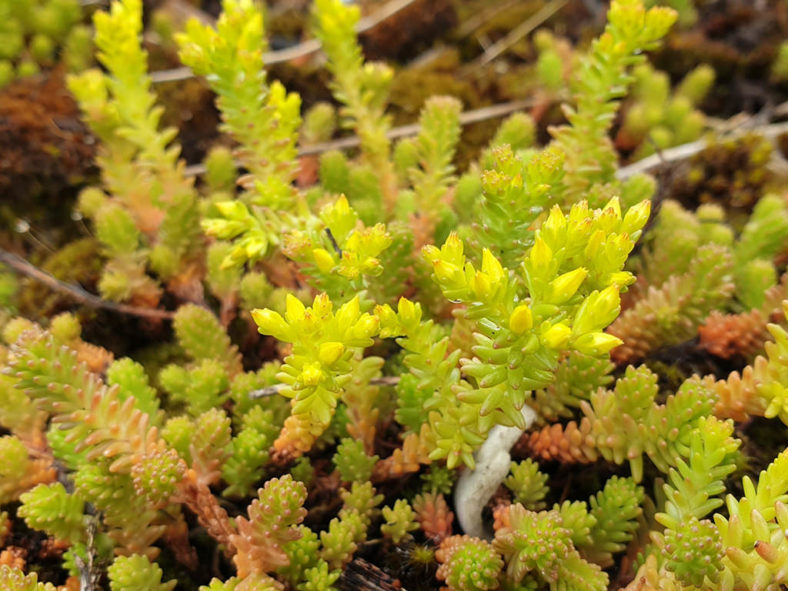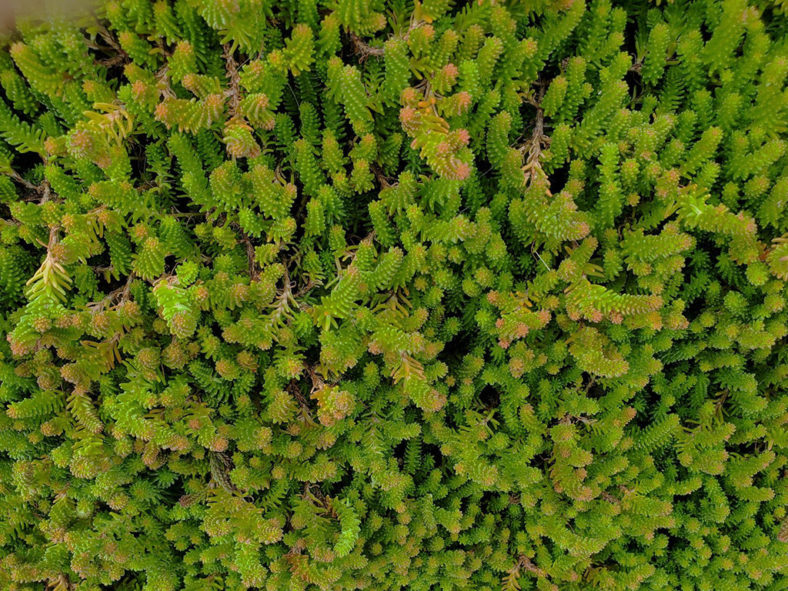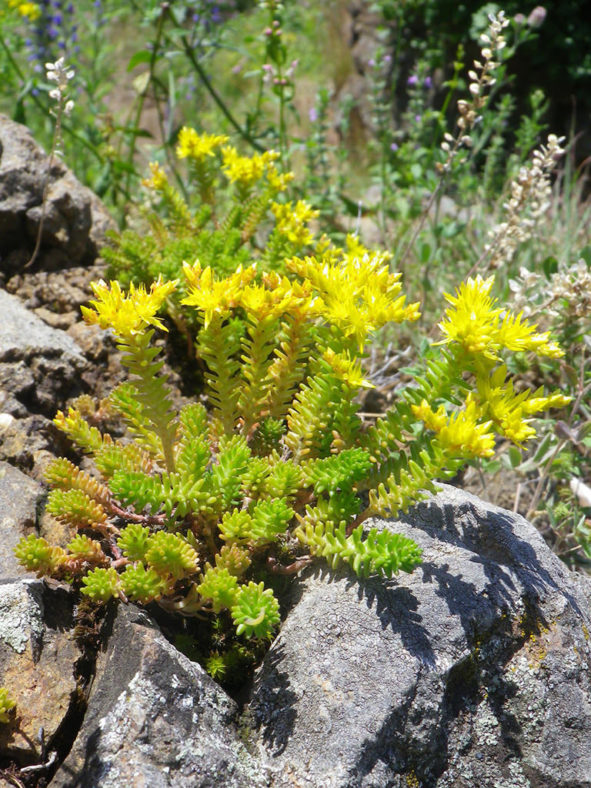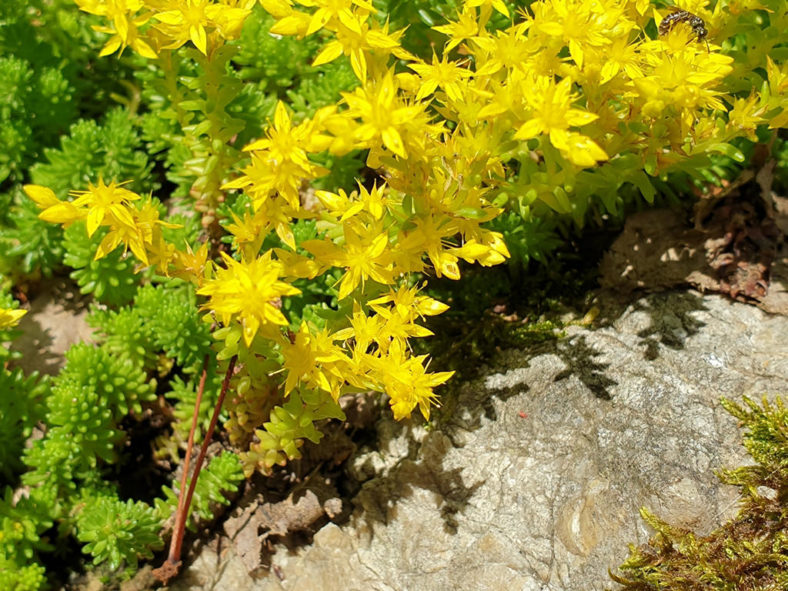Scientific Name
Sedum sexangulare L.
Common Name(s)
Chain Stonecrop, Hexagon Stonecrop, Insipid Stonecrop, Six-sided Stonecrop, Tasteless Stonecrop, Watch Chain Sedum
Synonym(s)
Sedum acre subsp. sexangulare, Sedum acre var. sexangulare
Scientific Classification
Family: Crassulaceae
Subfamily: Sempervivoideae
Tribe: Sedeae
Genus: Sedum
Etymology
The specific epithet "sexangulare (seks-an-gew-LAIR-ee)" means "six-angled" and refers to the leaves of this species that are usually arranged in six rows.
Origin
This species is native to central, southern, and south-eastern Europe and southwestern Asia, where it grows in the wild and is often cultivated as an ornamental plant. It has escaped from gardens and naturalized in the United States (parts of the Upper Midwest and New England) and Canada (Ontario).
Description
Sedum sexangulare is a mat-forming succulent with ascending, branched stems that bear fleshy, bright green leaves usually arranged in six spiral rows. It can grow up to 4 inches (10 cm) tall, spreading by stolons along the ground. The leaves are cylindrical, measuring about 0.2 inches (0.5 cm) long. They take on bronze tones in fall and winter.
The flowers are small, star-shaped, usually 5-petaled, bright yellow, and appear in clusters just above the foliage in summer.
Sedum sexangulare is similar to Sedum acre but has shorter and denser leaves. The leaves of Sedum sexangulare have a very mild taste, while the leaves of Sedum acre are bitter.

How to Grow and Care for Sedum sexangulare
Light: This succulent grows best in locations where it will enjoy the full sun for at least six hours daily. It will tolerate partial shade but will not thrive in deep shade. Keep your indoor plant in a sunny window or under artificial lights.
Soil: S. sexangulare does not like to sit in waterlogged soil, so drainage is essential to prevent root rot. Choose a well-draining soil mix.
Hardiness: This plant is tolerant of heat and freezing temperatures. S. sexangulare can withstand temperatures as low as -30 to 30 °F (-34.4 to -1.1 °C), USDA hardiness zones 4a to 9b.
Watering: From spring through fall, water thoroughly and wait for the soil to dry out before watering again. In winter, water the plant just enough to keep it from shriveling. Avoid wetting the leaves, stems, and flowers when watering.
Fertilizing: Feed with a balanced organic fertilizer in spring. Feeding is unnecessary as the plant is divided annually and provided with fresh soil.
Repotting: Repot your plant when it outgrows its current pot by moving it out to a larger container to hold the plant better. Spring is the best time to repot S. sexangulare. Make sure the soil is dry before you begin repotting.
Propagation: Once you have one S. sexangulare, it is easy to make more by taking stems or leaf cuttings and dividing the plant. It is also easy to grow from seed. Take cuttings in spring when the plant is in the period of active growth. Once it has finished flowering, it is the right time for division. Spring or summer is the best time to sow the seeds.
Learn more at How to Grow and Care for Sedum.
Toxicity of Sedum sexangulare
S. sexangulare is not listed as toxic for people but can be mildly toxic to pets and children.
Links
- Back to genus Sedum
- Succupedia: Browse succulents by Scientific Name, Common Name, Genus, Family, USDA Hardiness Zone, Origin, or cacti by Genus
Photo Gallery
Click on a photo to see a larger version.


